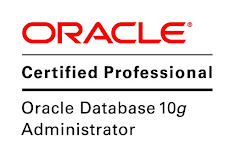We have a four nodes cluster. Using a simple TNS descriptor for connection:
RACDB =
(DESCRIPTION =
(ADDRESS = (PROTOCOL = TCP)(HOST = rac1-vip.us.oracle.com)(PORT = 1521))
(ADDRESS = (PROTOCOL = TCP)(HOST = rac2-vip.us.oracle.com)(PORT = 1521))
(ADDRESS = (PROTOCOL = TCP)(HOST = rac3-vip.us.oracle.com)(PORT = 1521))
(ADDRESS = (PROTOCOL = TCP)(HOST = rac4-vip.us.oracle.com)(PORT = 1521))
(CONNECT_DATA =
(SERVICE_NAME = racdb)
)
)
In this case, client will connect to the first node (on rac1 local listener) (rac1-vip.us.oracle.com) only (if it's available of cource). For avoiding this situation we had to use LOAD_BALANCE parameter.
RACDB =
(DESCRIPTION =
(LOAD_BALANCE=ON)
(ADDRESS = (PROTOCOL = TCP)(HOST = rac1-vip.us.oracle.com)(PORT = 1521))
(ADDRESS = (PROTOCOL = TCP)(HOST = rac2-vip.us.oracle.com)(PORT = 1521))
(ADDRESS = (PROTOCOL = TCP)(HOST = rac3-vip.us.oracle.com)(PORT = 1521))
(ADDRESS = (PROTOCOL = TCP)(HOST = rac4-vip.us.oracle.com)(PORT = 1521))
(CONNECT_DATA =
(SERVICE_NAME = racdb)
)
)
Now, Oracle Net will choose one address from the list of addresses in a random sequence that will allow clients to balance the load on the all four listeners. It was in previous 11gr2 versions. How does it work in new version? In 11gR2 SCAN (Single Client Access Name) was introduced. The SCAN feature is a new 'layer' between clients and local listeners in cluster, that allows you to change the your cluster configuration (i.e add/remove nodes) without making configuration changes in their clients. It means that now you can use only one name for connection to RAC instead of using a set of VIPs.
RACDB1 =
(DESCRIPTION =
(ADDRESS = (PROTOCOL = TCP)(HOST = rac-scan.cluster.us.oracle.com)(PORT = 1521))
(CONNECT_DATA =
(SERVICE_NAME = racdb)
)
)
The SCAN is configured during the installation of Oracle Grid Infrastructure. There are 2 options for defining the SCAN:
- Define the SCAN in your corporate DNS (Domain Name Service)
- Use the Grid Naming Service (GNS).
In first option your network administrator has to create a single name in DNS server that resolves up to 3 IP addresses using a round-robin algorithm. Three IP addresses are recommended considering load balancing and high availability requirements regardless of the number of servers in the cluster (but using two addresses is also possible). The IP addresses must be on the same subnet as your public network in the cluster. For example:
rac-scan.cluster.us.oracle.com IN A 192.168.2.141
IN A 192.168.2.142
IN A 192.168.2.143
That means, if you connect to RAC using RACDB1 descriptor and corporate DNS you will balance the load on DNS level (using round-robin algorithm). Each time when you are resolving the rac-scan.cluster.us.oracle.com name DNS will send you different SCAN VIP.
You can also to install Grid Infrastructure without DNS. In this case, you would use a hosts-file entry to resolve the SCAN to one IP address. Since you are using only one (and only one) SCAN VIP there is no opportunity for load balancing on SCAN level, but you are able to use load balancing across nodes VIPs described above. Second option is using GNS. Using GNS assumes you have a DHCP service for delivering IP for SCAN VIPs (not only) and corporate DNS available on your public network. During the cluster configuration you are defining the deligated subdomain and GNS VIP for GNS. Before that you should set up the DNS for subdomain deligation.In this case, three IP addresses will be acquired from a DHCP service to create the SCAN and name resolution for the SCAN will be provided by the GNS.
(DESCRIPTION =
(ADDRESS = (PROTOCOL = TCP)(HOST = SCAN-vip1)(PORT = 1521))
(ADDRESS = (PROTOCOL = TCP)(HOST = SCAN-vip2)(PORT = 1521))
(ADDRESS = (PROTOCOL = TCP)(HOST = SCAN-vip3)(PORT = 1521))
(CONNECT_DATA =
(SERVICE_NAME = racdb)
)
)
,where SCAN-vipN - SCAN VIPs address.
As yo can see, in this case, clients will connect to the first SCAN VIP only (SCAN-vip1 in the example). For avoiding this situation using LOAD_BALANCE parameter:
RACDB1 =
(DESCRIPTION =
(LOAD_BALANCE=ON)
(ADDRESS = (PROTOCOL = TCP)(HOST = rac-scan.cluster.us.oracle.com)(PORT = 1521))
(CONNECT_DATA =
(SERVICE_NAME = racdb)
)
)
According to Oracle documentation, this parameter would have 'ON' default values only if the specified DESCRIPTION_LIST tag. Therefore, for load balancing in this case, you should set the LOAD_BALANCE parameter to 'ON' state, even if the SCAN is used.
Conclusion
In conclusion I would like to emphasize that described above client-side load balancing technology is transparent to the application and it does not require application modifications for all interfaces based on OCI (OCI, ODBC, JDBC, ADO DB, BDE).










